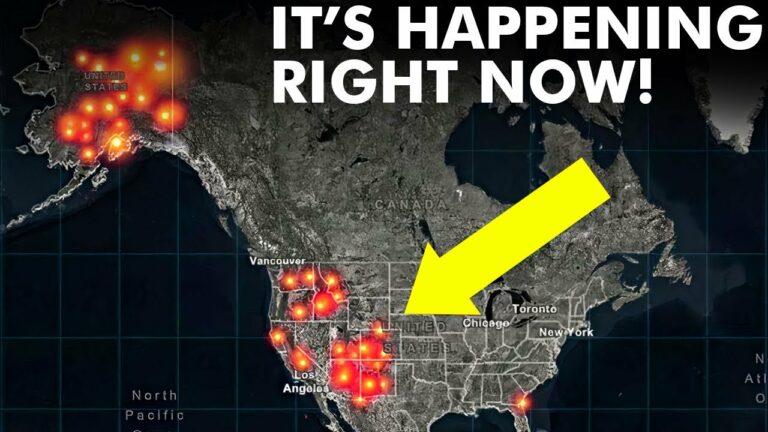The Yellowstone Officials FINAL WARNING Terrifies The Whole World!
Wyoming’s Yellowstone National Park is one of the unique places on Earth. Not only is it the site of a massive volcano, but it’s also home to an active geyser field and a variety of other hot springs and geothermal features. Visitors can see steam rising from the ground, bubbling mud pots, and even geysers erupting. It’s also a marvelous place to see wildlife, including bison, elks, antelopes, wolves, and bears.
The location of Yellowstone makes it a bit remote, and the geothermal features can be dangerous. The Yellowstone National Park expands over 3500 square miles, sitting atop a volcanic hot spot. Most of the park lies in Wyoming, while some parts spread to Montano and Idaho. Canyons, alpine rivers, and lush forests are features typical of the Yellowstone National Park. Yellowstone National Park was built on top of a supervolcano. Supervolcanoes can be described as volcanoes that produce more than a thousand cubic kilometers of gas, ash, magma, and rock.
Lake Toba in Indonesia, Lake Taupo in New Zealand, and Yellowstone in the United States are supervolcanoes that erupted less than 100,000 years ago. In the past few months, there has been a huge sudden uplift inside the volcano system. This uplift is likely due to increased magma below the surface. While there is no immediate danger of an eruption, geologists are closely monitoring the situation.
We embark to Wyoming to explore the ravishing beauty of the Yellowstone National Park and learn more about the huge sudden uplift in the volcano system that Yellowstone National Park officials detected and the threat it poses. The Yellowstone hot spot has been stable for a long time now. As the North American continent has drifted southwest, the old eruptions that occurred in the Yellowstone region can be associated with the region that we now call the southeastern part of Oregon.
The most recent outbreaks occurred in the northeast corner of Wyoming. The Yellowstone supervolcano has had three significant eruptions, the last one happening 640,000 years ago. The supervolcano is responsible for the park’s hot springs, geysers, and other hydrothermal features. The supervolcano also created the caldera, where the park is located. The caldera is a bowl-shaped depression that forms when a volcano’s magma or lava is ejected. The caldera at Yellowstone is about 34 miles wide.
After the last eruption, the super volcano entered a period of dormancy. Over time, the caldera filled up with water, and forestation began. This created an ecosystem that is home to many different animal species. Yellowstone National Park is a sanctuary to one of the world’s largest supervolcanoes.
Do not forget to share your opinion with us to provide you with the best posts !




0 Comments